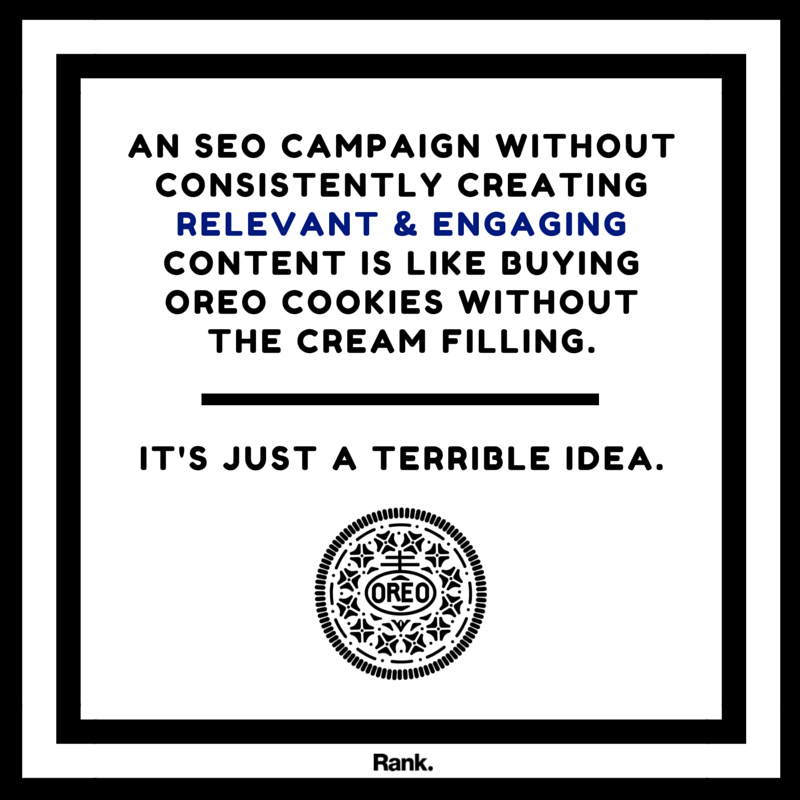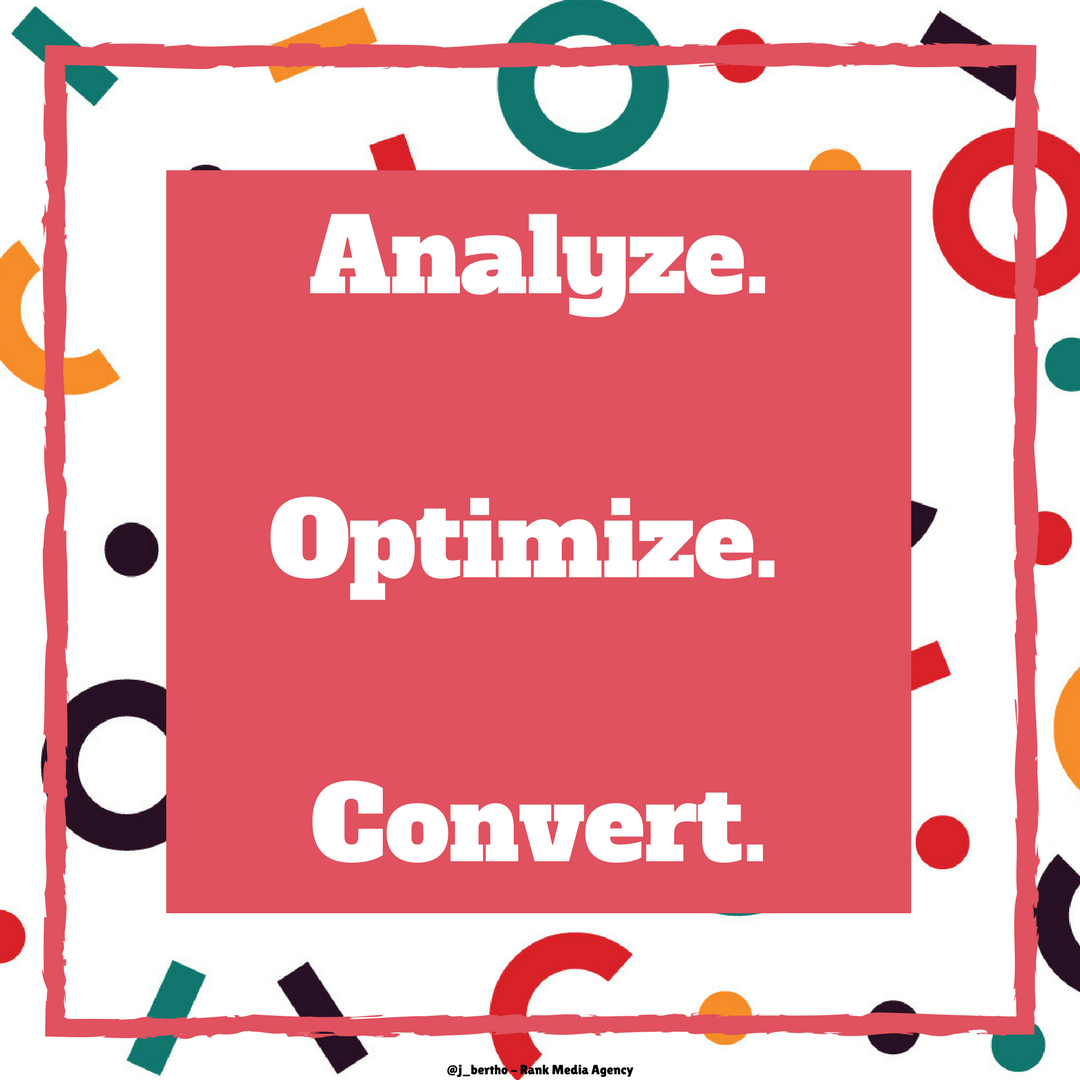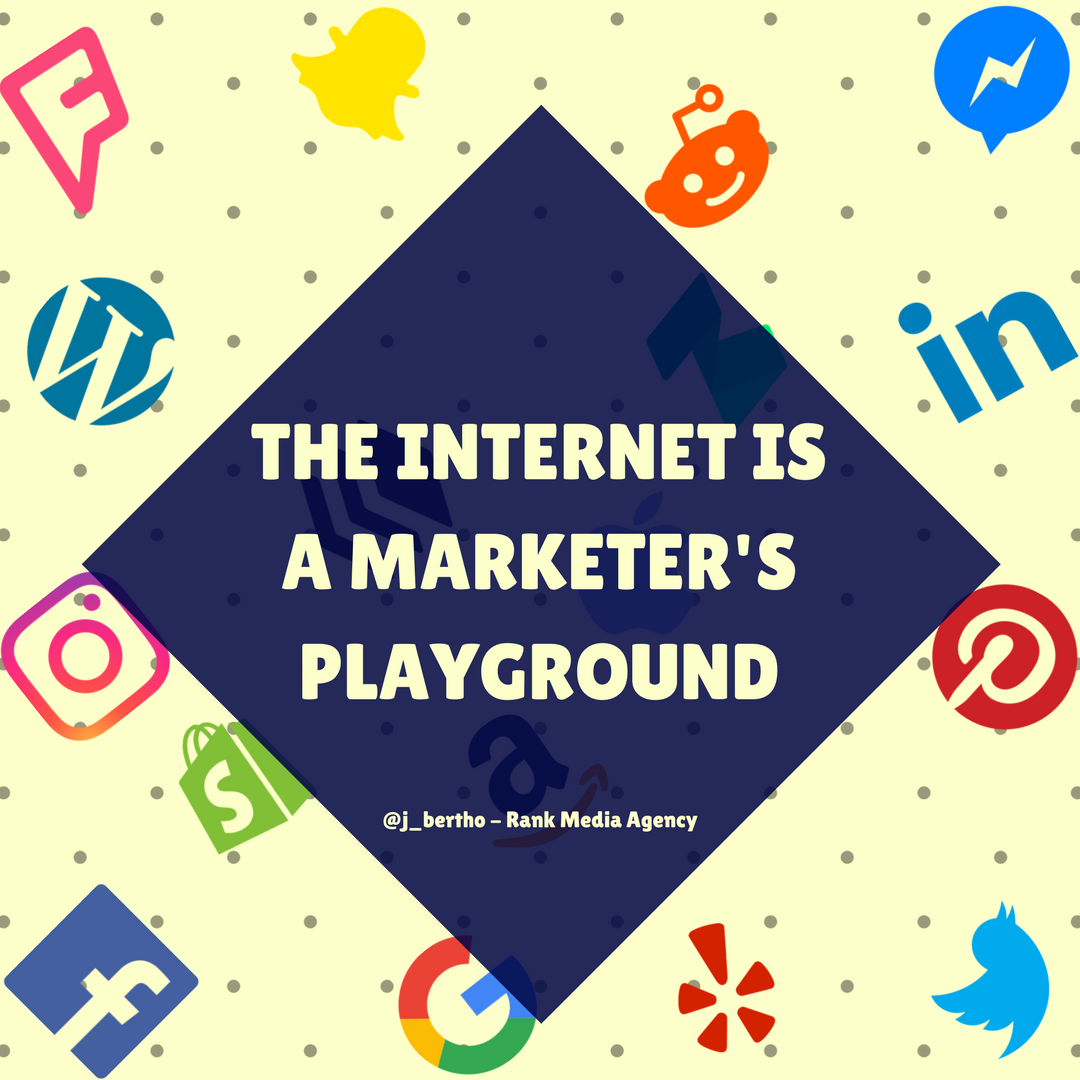18 Effective Ways to Market Your Business Online
By: Rank Media

Navigating the digital environment can be an arduous task for small businesses, especially for companies that have been reliant on traditional marketing tactics. While business classes teach us that there are five main promotional activities in the communications mix – advertising, direct response marketing, sales promotions, personal selling, and public relations – online marketing has quickly evolved into a digital promotional mix on its own.
While traditional marketing practices have certain nuances and skill requirements, online marketing has become a massive endeavor for businesses, where an increasing amount of skill sets are needed to manage campaigns on a large scale successfully. Technical and coding prowess, creative design, astute analytics skills, and copywriting are only a few of the main factors to be considered when deploying promotional activities on the internet. The evolution of social media platforms, periodic algorithm adjustments from search engines, and conception of online advertising exchanges have given digital marketers an arsenal unlike anything that has been seen before in advertising.
However, despite all of the tools readily available at everyone’s disposal, many businesses have been slow in adopting digital marketing practices to capture traffic online. Contrary to popular belief, just creating a website will not lead to hundreds of users hitting your site every day. Whether it’s through social media marketing, search engine optimization, or media buying, you need to develop trust with users and search engines alike to even get the tiniest slice of traffic available on the web.
Before venturing into digital marketing, there are some things a small business must consider before launching any campaigns, which may include:
- What is my budget for online marketing? –> Depending on how much you’re willing to invest into digital marketing, the outcomes can either be substantial or minuscule. While we don’t want to hang onto the old saying “to make money, you have to spend money,” you will need to invest a good amount of resources, labor or otherwise, into propelling your brand into the spotlight.
- What are my objectives? –> While establishing your goals may seem elementary, this is where a lot of small businesses make mistakes with digital marketing. Although fancy metrics such as likes, shares, and views illustrate one’s popularity, they do not always translate into leads and sales.
- Who is my niche audience? –> Better understanding who you want to reach with online marketing will make it easier to develop a strategic plan of action. Media buying platforms, in particular, offer a wide array of targeting options that can help you pinpoint the people most likely to become a customer.
- What is my competitive advantage? –> Once again, this may seem like a fundamental element in the planning process, but it can be quite easy to forget if you’re building a new business from scratch. It’s important to define the reason why people should consider your company over a myriad of competitors, especially if what you’re selling isn’t revolutionary or truly distinct from others. Make light of the benefits you provide over competitors and highlight it within your marketing initiatives.
Now that we’ve gone through the preamble, it’s important to know the different tactics and channels that can be employed to promote your brand in a positive light and capture relevant traffic. Here is a list of all the ways you can market your business online:
Search Engine Optimization

1. Optimize your website for search engines (SEO)
Search Engine Optimization, also known as SEO, is the most rewarding inbound marketing campaign you can manage in the digital environment. SEO is the process of increasing a website’s ranking for relevant keywords on search engines such as Google and Bing. Over the past ten years, search engine algorithms have evolved quite a bit to the point where webmasters cannot employ underhanded tactics (aka “black hat” tactics) to manipulate search engine rankings. For example, webmasters would either inflate backlink counts by spamming blogs and forums or insert hidden keyword-rich text on web pages to make their websites seem more relevant to particular search terms. Fortunately, Google algorithm updates such as Panda, Penguin, Hummingbird, and others have penalized sites that utilize black-hat tactics. If you want to increase your exposure in front of users searching for your products and services, it will take a blend of content writing, onsite technical optimization, strategic link building, and local listing optimization to achieve long-lasting rankings.
As illustrated by the somber kitten above, optimizing your website for mobile devices is more important than ever right now. With Mobilegeddon, Google’s mobile algorithm update two years ago, the search engine giant put webmasters on notice with regards to mobile usability. If your website is not mobile-friendly, it runs the risk of losing traction organically on mobile devices, which is dangerous considering nearly 60% of all searches done on Google are made from smartphones. If you still have not updated your website for the new era of digital marketing, it’s time to get moving.
2. Utilize rich snippets
While this blends in with optimizing your website for SEO, it’s something that is often overlooked on the technical level and quite easy to implement depending on your site’s infrastructure. Adding structured data, also known as schema markup, allows you to submit rich data to search engines, which can add more substance to your listings on Google and Bing. For example, if you manage an ecommerce store, you can submit pertinent information such as pricing, ratings, stock availability, and category within the search engine listing directly.
3. Reach out to influencers
Reaching out to influencers can help you achieve two different objectives: increasing brand awareness and earning valuable backlinks. When it comes to the former, reaching out to popular bloggers and social media rockstars can give you the inside track to accessing your niche audience in particular channels. For example, Instagram influencers monetize their following by publishing photos related to the particular brand, earning a relatively big check for promoting Fortune 500 brands. On the flip side, coordinating with a small blogger in your niche can allow you to promote your brand within targeted circles, leading to better conversion rates than some traditional media buying campaigns.
While publishing a photo to Instagram doesn’t have an impact on your SEO campaigns, earning inbound links from relevant and niche websites do make an impression. By accumulating appropriate links within your industry, you begin to develop a reputation with search engines and establish your authority for certain keywords and topics. Tread lightly, though. Engaging in any paid link schemes or link farms can lead to penalties, so utilize white-hat methods when building links back to your website.
4. Optimize local listings and directory listings
Depending on the nature of your business, you can use local listings and directory sites for different purposes. For businesses with local storefronts or service areas, it is important to maximize coverage on salient platforms. Restaurants, for example, have the most to gain when it comes to optimizing local listings. Not only is having accurate information essential, but positive reviews and ratings play a factor with regards to rankings, especially on Google My Business. The following listings are important if you’re looking to master local SEO:
- Google My Business
- Yelp
- Foursquare
- Trip Advisor
- Yellow Pages
- Bing Places
If your business does not serve customers on a local level, it is still important to optimize Google My Business in case users try to find contact information on your website. For SAAS businesses, there are a plethora of software review sites that can be utilized to generate awareness in specific software categories. Reviews play an integral role in rankings as well, so be sure to initiate your customer outreach campaigns as soon as you claim and optimize your profiles.
Content Marketing

5. Develop a blog and publish quality content on a regular basis
As an extension of your SEO campaign, you can utilize a blog to post a proper amount of high-quality content that seeks to address questions users in your niche may have. By serving pertinent information on a regular basis, you’ll be able to educate and entertain users in your target audience on a consistent basis. Additionally, once the content gets indexed and shared around the web, you’ll begin to notice an increase in inbound traffic from organic search. Establishing your authority with a well-managed blog and content marketing will help convert users in the long-run.
6. Repurpose content on LinkedIn and Medium
Just because you’re creating a wealth of content on your blog doesn’t mean you can’t post it elsewhere. Both LinkedIn and Medium have content posting capabilities that allow influencers and brands alike to share posts from external websites. The posting feature within LinkedIn can help you position individual employees within your company as industry influencers, cementing their authority in an otherwise crowded environment. Medium, on the other hand, can be setup and optimized for both individuals and companies, giving you yet another vehicle from which you can distribute content.
7. Repurpose content on SlideShare
Similar to publishing content on LinkedIn and Medium, you can utilize SlideShare to host your content in a presentation format for other professionals. From an organic search perspective, this is yet another channel that can be used to broadcast your content to wider audiences. With SlideShare having a high reputation on search engines, your content may tend to rank highly more quickly than it will on your website.
The beauty of SlideShare is that it will crawl PDFs and PPTs and transcribe the content within the page of the presentation. This content is useful for search engines and can be used to increase visibility for relevant searches within and outside the platform.
Social Media Marketing

8. Create a community and establish your presence
Developing connections with your target audience can be achieved in a myriad of ways on each of the major social media platforms. While Twitter provides the best opportunity to engage in one-to-one discussions with followers, all social media marketing channels can be utilized to build a dedicated following. If you’re just starting out with digital marketing, it might be necessary to tap into your existing social networks to build your initial foundation, using word of mouth and referrals to increase follower counts.
When it comes to deciding which platforms to use in your social media marketing efforts, it’s imperative that you understand your target audience and where they interact most. Here is a quick overview of the leading social media channels:
- Facebook is the most widely adopted social media website, which means you’re likely to find a good amount of potential customers by marketing through this platform. Its advertising platform is also second to none.
- Twitter has become an excellent vehicle for customer service management and discussions, so it should be used to either generate leads, push users to a website, or respond to questions/comments.
- Instagram is photo-driven, which gives ecommerce businesses a prime opportunity to showcase products. Local businesses can also tap into the power of Instagram to capture foot traffic.
- LinkedIn is the leading professional social media platform, which can prove advantageous for both lead generation and recruiting-based campaigns.
- Pinterest is a search engine and social media platform hybrid, providing ecommerce brands with a powerful tool for traffic generation.
- Snapchat skews more to the younger audience, which can be helpful for major brands to generate brand awareness. The sponsored geofilters also give local advertisers an opportunity to reach niche audiences.
9. Publish engaging content
Although it’s relatively straightforward to publish content to any of the leading social media platforms, creating engaging content on a consistent basis can be somewhat difficult, even for the largest brands represented on the web. You will need to tailor your content to your audience and ensure that it does not come off as too promotional. Adhere to Gary Vaynerchuck’s “Jab, Jab, Jab, Right Hook” model when it comes to developing content calendars: publish a regular stream of community-based content and sprinkle in promotions every three-four posts to lead users into taking the desired action. However, if you become too promotional, users will begin to tune you out and unfollow your pages.
10. Create a buzz with interactive contests
One of the easiest ways to build up an audience is running an interactive competition. Although you may be reticent to invest in offering a free prize, the more exclusive and valuable the prize, the more chances you have of capturing people’s attention on social networks. On the other hand, if you have a sizeable audience, managing photo-sharing or user-generated content contests to increase engagement on Facebook, Twitter, and Instagram is a nice way to reward your existing followers and generate goodwill.
11. Create an inventory of video content
With news feeds becoming more crowded than ever, you need to work pretty hard to capture the interest of users that, quite frankly, have social media ADD. Publishing videos can help your brand stand out in user feeds, especially on Facebook. As videos yield the highest engagement rates, they tend to show up a lot more on your Instagram and Facebook feeds, where algorithms prioritize content based on a myriad of factors (engagement, recency, etc.) YouTube also remains a formidable channel for video marketing. Whether you’re converting written content into video or vice versa, don’t ignore the potential of amassing subscribers on YouTube.
Media Buying & PPC Advertising

12. Get started with Google AdWords
There’s no bigger pay-per-click advertising platform than Google AdWords for one single reason: search advertising brings direct traffic. Unlike search engine optimization, where it could take six-twelve months to see any real impact, search advertising via the Google AdWords platform can help you achieve a positive ROI within a matter of weeks depending on your business. The different types of advertising available within the Google AdWords interface include:
- Search Advertising –> text ads within Google search results.
- Display Advertising –> banner advertising on websites within Google’s exchange.
- Shopping Advertising –> product ads within Google search results.
- Video Advertising –> video ads within YouTube and Google’s exchange.
- App Advertising –> various ad formats with the primary objective of increasing app installs.
As you can see, the Google AdWords platform is pretty robust, but it does require a lot of day-to-day optimization. Managing bid adjustments, analyzing search queries, and building up your quality score does take a considerable amount of time and attention to detail. Similar to SEO, Google will rank your ads based on many factors, assigning quality scores to your keywords, which can increase or decrease the amount you pay per click. If you leave your campaign on auto-pilot, you run the risk of seeing performance dip and costs rise, which isn’t good for anyone.
13. Spruce up your media buying with Bing Ads
Of course, while Google currently dominates the search engine market share in North America, Bing comfortably sits in second place ahead of all other remaining search engines. Although there are not as many people using Bing, the costs are considerably cheaper, and the Bing Ads platform is a carbon copy of the Google AdWords platform. However, there is no display advertising available via Bing, but you can create search and shopping campaigns with relative ease.
14. Pinpoint niche audiences with social media advertising
The advertising capabilities on the leading social media platforms have become more sophisticated over the past couple of years. When yours truly first started developing campaigns for businesses, only Facebook and LinkedIn had advertising capabilities. Since then, a whole suite of features has been made available on both of those websites. During the same timeframe, ads managers were developed and added to Twitter, Instagram, Pinterest, Snapchat, and Reddit, with other small networks following in their footsteps. There is a myriad of targeting options available that can help you target the smallest of audiences, making your ads more relevant to users. Additionally, remarketing and lookalike audience features allow you to serve ads to existing users and users that are similar to existing customers, giving you greater flexibility with your digital advertising spend. With the ability to target users based on interests, behaviours, job titles, income, and a whole plethora of other options, you can create cost-effective campaigns within the social media advertising channels that are most relevant to your business.
Other Tactics

15. Build engagement with email marketing
Developing a database can prove to have significant value for your business in the long run. For business-to-business companies, email marketing can be utilized to nurture leads, eventually moving prospects along a pre-defined path to push them through the conversion funnel. On the other hand, ecommerce businesses can build up the average customer lifetime value by actively remarketing to existing customers, sending out emails with promotions, discounts, and exclusive offers that cannot be accessed otherwise. You can build up your database by adding a newsletter subscription form on your site, running contests via social media platforms, or setting up exit-intent popups on your website.
16. Create eBooks
Investing in content creation can be quite advantageous for online marketing. Not only can you earn brownie points with search engines for pumping out quality content on a regular basis, but you can also feed your social media platforms with fresh posts. However, if you have a series of blog posts that touch upon a similar topic, you can always combine them into one eBook, which can then be deployed as a lead magnet in other marketing campaigns.
17. Distribute press releases
Have something newsworthy to broadcast to the world? Create a press release and submit it online! While the tactic of distributing online press releases has fallen into disrepute over the past couple of years due to being abused by black-hat SEO technicians, it does have merit when it comes to announcing significant news. If the press release is well written, it will carry a little (not a lot) of juice for SEO, but more importantly, can be picked up by major distribution outlets and lead to traffic generation for your website.
18. Host a webinar
Establishing yourself as a thought-leader within your industry can be quite difficult due to how much noise there is in the digital environment. However, hosting a webinar can give you the opportunity to convey your insights and instruct users in a personal setting, assisting with customer retention and lead generation campaigns. Webinars are highly efficacious in the selling process as you get to convince a broad audience of users, most of which are highly-engaged, on why they should conduct business with your company.
Bringing it all together
The list above may seem comprehensive, but there is still a multitude of tactics that have not been discussed, such as purchasing media through contextual networks, CPM advertising, forum seeding, etc. However, with a dearth of resources and capital, it may not be feasible for small businesses to become fully entrenched with digital marketing. Unless you have the resources to build out an internal digital marketing department, it might be more cost-effective to utilize a digital marketing agency to assist with carrying out these campaigns. By relying on the experience and resources of an agency, you afford your small business the opportunity to ensure that campaigns launch smoothly and have a watchdog optimizing them on a day-to-day basis.






 (800) 915 7990
(800) 915 7990 hello@rankmedia.com
hello@rankmedia.com